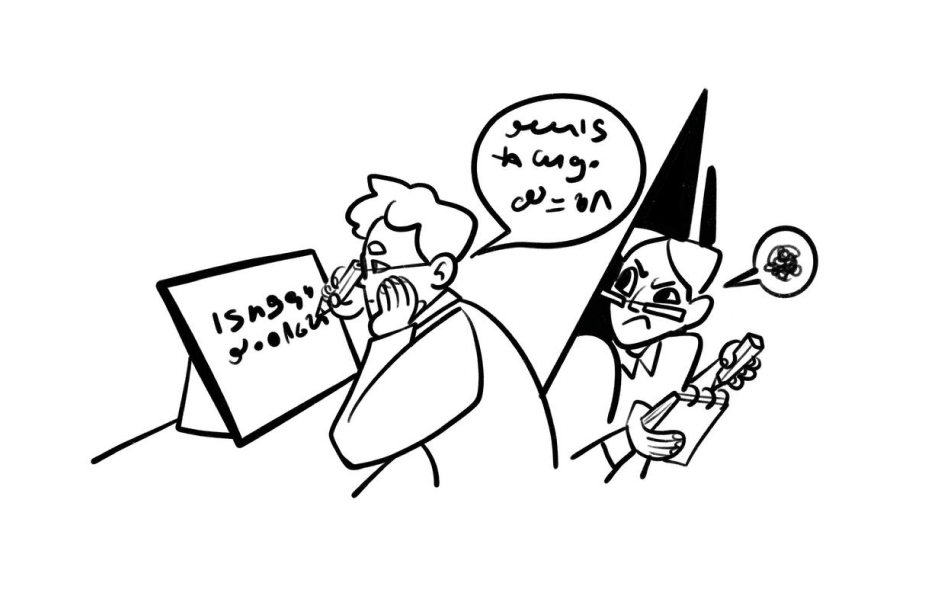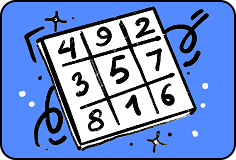Quantum encryption Stakes in games with chaos
— Who are you, finally?
— I am a part of that power which eternally wills evil and eternally works good.
“Faust” by Goethe.
What is known about cryptography
Surprisingly or not, if you open a dictionary to read the definition of “encryption”, you will see this: “Reversible transformation of information for the purpose of hiding it from unauthorized individuals while simultaneously providing access to authorized users.”

Looking into the origins of encryption, one might find this: “The first encrypted messages appeared in the form of cave paintings long before the invention of writing. The word ‘cryptography’ itself comes from two Greek words: ‘kryptos’ meaning secret and ‘grapho’ meaning I write.”
Regarding the emergence of the need for encryption, it is observed that: “The science of encryption is as ancient as writing itself. As soon as people began to have important correspondence, they had the idea to conceal their messages from prying eyes.
Remember the famous Scytale cipher? In this encryption method, a special rod of a certain diameter, called a scytale, was used. A strip with a written message was wound around the scytale. Then, the strip was unwound and sent to the recipient. The recipient, having a scytale of the same diameter, would wind the strip onto it and read the message.
Or the Caesar Cipher, where each letter of the alphabet was replaced by the third letter following it. Ciphers involving the substitution of letters or the replacement of letters with corresponding symbols later came to be known as “substitution ciphers.”
In all these encryption methods, a single key was used for both encrypting and decrypting the messages. Ciphers using this method are referred to as “symmetric ciphers.”
A notable example of symmetric encryption is the Vernam cipher. In 1917, telegraph operator Gilbert Vernam invented a cipher based on the bitwise XOR operation. Simply put, another letter overlays each letter of the original message, rendering the original letter unreadable.
After symmetric encryption came asymmetric encryption. In asymmetric encryption, two keys are used: one can be public, while the other must be kept private. The public and private keys are always connected by an algorithm that generates them. The essence is that within this algorithm there is a third, also secret, number that is related to both keys.
At this point, we could conclude our narrative and say that we can now send any message securely, our data is cryptographically encrypted, and indeed, messengers have long been exchanging encryption keys on our behalf. But. Relatively recently, cryptography decided to take a completely new path, fundamentally different from everything that came before. We invite you to look at encryption and the development of cryptography from a completely different angle. And we will start with the natural human need to hide and observe.
A Different Perspective on Cryptography
People have always encrypted information, ever since they became self-aware. Can you find even one example in history where a sentient human immediately revealed what was on their mind? For instance, instead of saying, “I am your friend, let’s share the cave,” they said, “I need to survive. So tomorrow, when you go hunting, I’ll sneak up behind you and introduce you to my spear.” History does not record such blunt honesty, but imagine how much simpler life would be if it did.
Or consider the exchange of glances?
Humans have always needed to hide meanings in letters, symbols, words between the lines, and beautiful metaphors.
All the aforementioned types of encryption—symmetric and asymmetric—are indeed used to maintain the confidentiality of transmitted information, thus all data within them is transferred in a specially trusted manner. In other words, the resilience of such cryptographic protocols boils down to assumptions about the computational capabilities of the eavesdropper. It’s like a love song that doesn’t mention love even once.
Why the Need for a New Kind of Cryptography Arises Now, Protecting Us Not Just From Malefactors but From Ourselves?
Betting in chaotic games
Imagine a communication line that cannot be intercepted. At all. No matter what the malefactor does or who they are, attempts to break the protection will not succeed. And it’s not because the encryption algorithms are too complex, nor because the malefactor lacks sufficient computational power. The data transmission system is constructed in such a way that breaking into it would violate the laws of physics.
Quantum Cryptography as a Science Emerged in 1984 with the Development of the First Quantum Key Distribution Protocol, BB84.
The foundation of this science rests on the principle that a malefactor can try anything, utilize any tools and equipment – be it a supercomputer, a superintelligence, or rocket fuel – but they should not be able to intercept the data because nature itself prohibits the interception of restricted information.
In quantum cryptography, signals are transmitted not in the classical form but through a stream of single photons. From high school physics, we know that a photon cannot be split, measured, copied, or stealthily diverted without losing its properties and being destroyed, meaning it does not reach the receiving end. It sounds odd that the system replacing robust classical encryption systems is built not on the complexity of calculations but on the fragility and vulnerability of a particle that cannot even be measured.
Quantum Cryptography – Complex
Cryptographers, when constructing a quantum communication system, generate a weak pulse equivalent or close to the energy of a single photon and send it through the communication line. To encode quantum information in the pulse, they modulate the signal by changing its polarization or phase state.
In essence, the concept of a photon’s “phase state” is a non-existent notion, invented by experimenters in the field of radiophysics. A photon is a particle without a phase, yet it is part of a wave. The phase of a wave is a characteristic that indicates a certain offset of the state of the electromagnetic wave’s field. If one imagines a wave as a sine wave on a coordinate plane, shifts in its position relative to the origin correspond to certain phase states.
Quantum cryptography is simple
In simple terms, when a person walks, they repeat the step process, and the step also has a period, much like a wave. If two people are walking in step, their phases match; if they are out of step, their phase states differ. If one begins their movement in the middle of the other’s step, their steps are in antiphase.
To encode quantum information in a pulse, a modulating device is used to shift the wave. To measure this shift, we superimpose the wave with an identical one and observe the result. If the waves are in antiphase, the two quantities cancel each other out, resulting in zero output. However, if we guessed correctly, the sine waves add up, amplifying the field, and the resulting signal becomes high. So, if our steps coincide and the signal strengthens, it means we measured the photon’s phase correctly.
Why all of this?
All these quantum intricacies are necessary for generating a secret key – a random sequence that we mix with data to make it impossible to intercept. This is similar to how a VPN router works, where we establish a local network through the external internet to prevent unauthorized access. We set up two devices, each with a port connected to a computer and a port “looking” into the outside world. The sender inputs data, the device encrypts it, and securely transmits it through the external world, while the receiving end decrypts and delivers it to the recipient.
In quantum encryption devices, there is a random number generator (physical, not pseudo-RNG), and each device randomly sets the quantum state of photons.
It’s akin to flipping a coin, where a third person will say whether our outcomes match or not. If I get heads, we’re told the coins matched, and I’ll know you also got heads. Similarly in quantum cryptography, but with one condition: the third party doesn’t know whether we got heads or tails – only we do.
The sending and receiving parties accumulate random but identical bits, overlay them onto the message, and get the perfect ciphertext: a completely random sequence plus a meaningful message equals a completely random sequence.
Why wouldn’t a hacker be able to hack the system?
A photon is indivisible; it cannot be split. If it is removed from the line, the receiving end will not receive anything, the photon detector won’t trigger, and the sender and receiver simply won’t use that bit in the key. The malefactor may intercept the photon, but the bit encrypted within it will not be used in transmission, rendering it useless. Copying or measuring the photon is also impossible; in any case, it will be destroyed, even if measured by the legitimate user.
What would happen if quantum cryptography and classical encryption systems were combined?
Cryptographers are already experimenting with combining quantum cryptography with classical encryption systems. In a classical encryption system, to achieve perfect protection, the length of the key length should match the length of the message, bit by bit, for ideal security. When quantum bits are combined with classical encryption, the resilience of the encryption increases, compared to simply increasing the number of bits in the key.
For example, a bank issues a virtual card to a client. The key’s lifespan in the card is a year (assuming it won’t be compromised within that time). Quantum cryptography allows for real-time changing of encryption keys – a hundred times per second, a thousand times per second, opening up new possibilities.
Both modes are needed if we have to transmit extremely confidential data. In such cases, encoding them bit by bit is possible. However, if we want to significantly increase the level of protection while maintaining high transmission speeds, we blend quantum and classical technologies, reaping the benefits of both – high speed and high security.
Why is there a need for a new kind of cryptography right now?
The reason may lie in the fact that computational power is growing rapidly, and we are forced to use longer and longer keys in classical encryption systems. Another reason could be that no one has proven definitively that there are no fast methods for factoring numbers – perhaps such methods already exist, and we just don’t know about them yet. Yet another reason could be that human and technological progress have always evolved concurrently. Perhaps now, in life and in science, we’re reaching that pivotal moment where such balance may be disrupted, and technology might outpace human development. Maybe it’s time to protect inventors not only from espionage but also from themselves.
Why tempt fate every time when there’s already a system that cannot be hacked by brute force, calculations, artificial intelligence, or in any way whatsoever? A system that can ensure absolute resistance to hacking. Some may call this new system chaos, others an idealistic concept of security, but it’s called quantum encryption.
Do you feel the shockwave?
It’s here!”
With that, the author of the article returns to the quantum world and invites you to enjoy the beauty and elegance of quantum encryption protocols in illustrations.
A brief summary of the BB84 protocol
Alice and Bob are playing ball. The ball is on Alice’s side.
When describing cryptographic protocols involving active agents, acting agents are commonly referred to by human names, and we will also adhere to this tradition. A short summary of quantum encryption protocols will help us understand: Alice – the sender, Bob – the receiver, and the eavesdropper Eve.
The BB84 protocol is akin to a road with reversible traffic and traffic lights. Imagine that everyone traveling on the reversible lane knows that the direction of traffic changes every hour. If someone needs to get ahead on this road, they will press the traffic light button, thus revealing themselves.
In this protocol, data transmission occurs via optical fiber using single photons, which are polarized in different planes, and all important information is encoded in the photon. The trick of this protocol is that Alice uses not two, but four types of photons – two linearly polarized (also known as “canonical”) and two diagonal. They correspond to so-called “different bases”.
Then the game begins: Alice uses another basis – diagonal, and randomly prepares the photon either in the diagonal or canonical basis, flipping a coin each time to decide which basis to choose. Bob plans to measure this and also flips a coin to understand in which basis to measure the photon. In 50% of cases, Bob does not guess the basis, which is quite natural not only for physics (in quantum cryptography, physics is particularly meticulous and quantizes polarization only to two states – either, or). Therefore, in any quantum encryption protocol, one always has to choose the basis first to find out what options are possible without touching the photon with the important information.
After choosing the basis, Alice and Bob, without hiding anything, can exchange information through a regular communication channel about which bases they used for preparing and measuring the photons. Then Alice and Bob simply discard all measurements that didn’t match. This is called the key sifting procedure. During key sifting, Bob and Alice obtain two identical sequences that no one else knows. With them, they can encrypt anything through regular, even non-quantum communication channels, thus conducting absolutely secret messages.
Now, the most crucial part: Why can’t the eavesdropper Eve clandestinely interfere with the encryption process? If Eve wants to intercept the message, she will have to engage in the same game and do exactly what Alice initially did. Eve must randomly choose a basis, perform a measurement in it, prepare a photon according to her measurement, and send it to Bob. And if, for example, Eve chooses the canonical basis while a diagonal photon is flying, for the adversary’s basis, the photon is not in some intermediate state; he is in a superposition of both – he becomes both horizontal and vertical simultaneously.
The wrong basis simply destroys the photon’s superposition; Eve, intervening, reveals herself and simply disrupts the process.
A brief summary of the B92 protocol
Alice and Bob are playing ball. Alice’s ball is elongated.
Protocol B92 is a direct successor to the BB84 protocol, but instead of the diagonal basis, it utilizes the circular basis.
In this protocol, Alice performs her usual actions, prepares a photon, measures the basis, and sends information to Bob through the quantum communication channel.
Bob also performs measurements on his side, but if he measures the photon in the wrong basis, a collapse of the wave function occurs, which self-destructs the entire chain of photons, leaving nothing for Eve to intercept.
A brief summary of the BB84 (4+2) or (SP6) protocol
Alice and Bob are simultaneously playing balls of different sizes.
In the BB84(4+2) protocol, Alice, just like in the BB84 protocol, uses 4 types of photons and follows her usual steps – she selects random bit positions, randomly chooses a basis for each bit, encodes the bit, and sends it through the quantum communication channel. Then, Bob selects the basis for detection, and the standard key sifting procedure takes place.
After that, similar to the BB84 protocol, Alice and Bob discard all measurements that did not match, along with measurements with a question mark resulting from the additional measurement. Due to the additional measurement, Eve cannot conclusively determine the key due to the constantly arising unknown values.
A brief summary of the E91 protocol
Alice and Bob want to play ball. Bella serves the ball to each of them in turn.
Between Alice and Bob, there is a generator that randomly generates 2 entangled particles. One of them is sent to Alice, and the other is sent to Bob.
Alice performs measurements on her side using three available methods, and Bob performs measurements on his side using three available methods as well. However, in this protocol, the measurement methods differ for each participant.”
Afterward, Alice and Bob exchange information over an open communication channel about the measurements they conducted on each particle and filter out the matching calculations. Once they have sieved their measurements and identified all the bits they can use as a one-time key, Alice and Bob select those measurements in which they used different projections and calculate Bell inequalities. In classical physics, Bell inequalities are always satisfied, while in quantum physics, they are violated.
Unlike other protocols where mismatched measurements are simply discarded, in the E91 protocol, measurements in different bases are used to check for the presence of Eve in the quantum channel.
A brief summary of the Lo05 protocol
Alice asks Bob to guess which hand holds the ball and which hand holds a rock resembling a ball.
The creators of the Lo05 protocol proceeded from the assumption that building quantum cryptography on the transmission of a single photon is still risky because a single photon containing important information may simply get lost along the way. At the same time, if multiple photons are transmitted simultaneously, hackers are tempted to take half of the transmitted photons and read them.
To detect an eavesdropper, in addition to the standard states, Alice needs to prepare bait states and transmit to Bob imitation packets of photons, and then collect statistics on how Bob receives them.
A brief summary of the SARG04 protocol
Alice and Bob want to play ball. But, to Eve’s surprise, they’re playing with snowballs.
The motivation behind creating the SARG04 protocol was the potential PNS attack, which involves splitting photon numbers. The key difference of this protocol lies in Bob applying a qubit filtering procedure instead of key sifting. Unlike classical computers, quantum computers use qubits to store information, which can take on the values 0 and 1 individually, as well as 0 and 1 simultaneously, existing in different states at once.
Alice does not disclose the basis in which she sends her qubit, So they can exist in different states simultaneously.
Alice does not disclose the basis in which she sends her qubit, so the malicious eavesdropper Eve cannot understand what happened. Eve has no information from Alice, which they exchange over the open channel.
Bob accepts Alice’s bit only if he receives a negative outcome when measuring the bit.
The Roman Empire has fallen. But we have scientific content that doesn’t survive, it triumphs!
Thank you!




